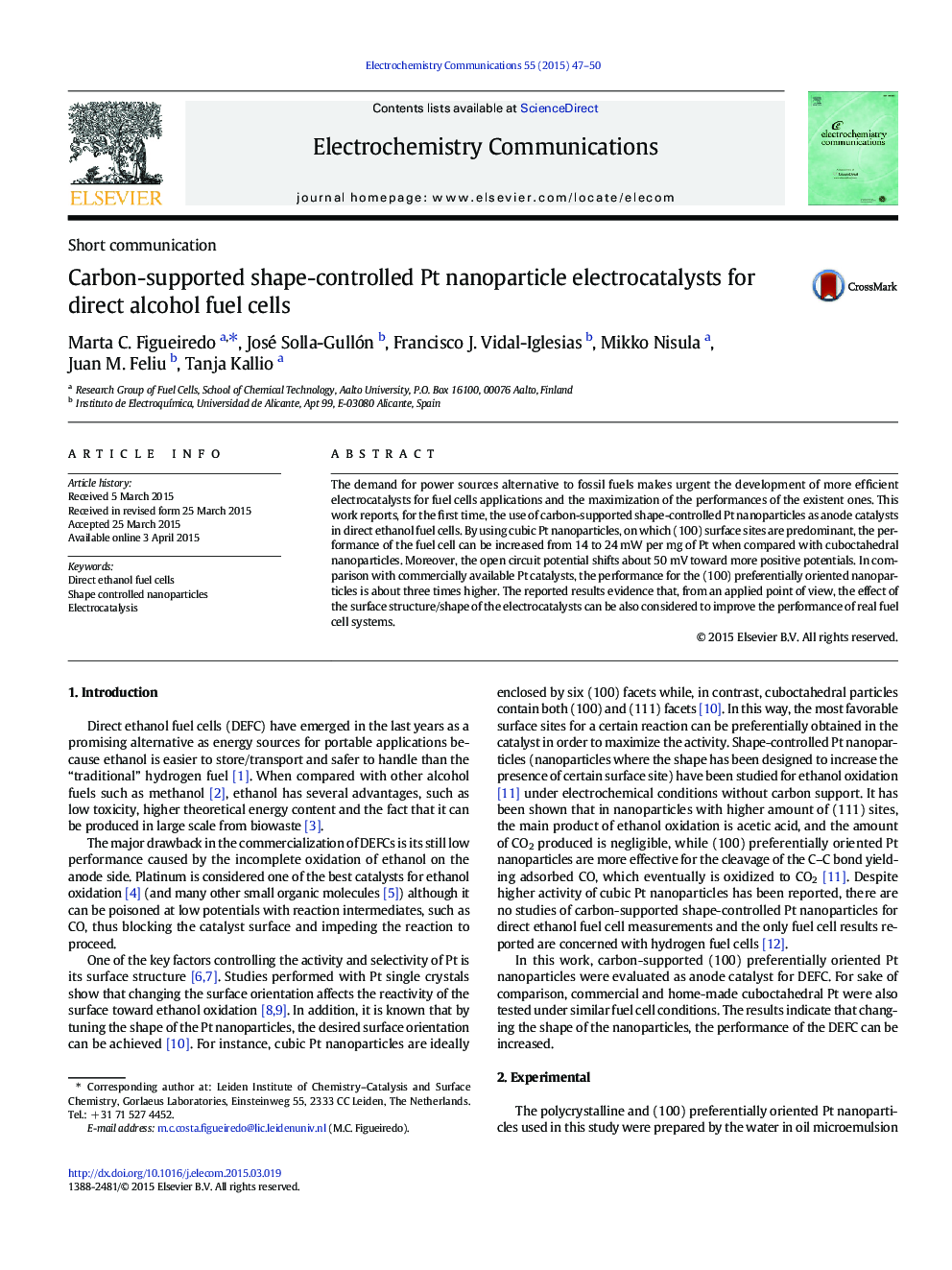| Article ID | Journal | Published Year | Pages | File Type |
|---|---|---|---|---|
| 178889 | Electrochemistry Communications | 2015 | 4 Pages |
•Carbon-supported shape-controlled Pt nanoparticles were tested as DEFC anodes.•Pt nanoparticles with more (100) surface sites showed increased performance.•Pt(100) nanoparticles presented 50 mV higher OCP.•The ability of (100) sites to break C–C bonds from ethanol was observed in DEFC.
The demand for power sources alternative to fossil fuels makes urgent the development of more efficient electrocatalysts for fuel cells applications and the maximization of the performances of the existent ones. This work reports, for the first time, the use of carbon-supported shape-controlled Pt nanoparticles as anode catalysts in direct ethanol fuel cells. By using cubic Pt nanoparticles, on which (100) surface sites are predominant, the performance of the fuel cell can be increased from 14 to 24 mW per mg of Pt when compared with cuboctahedral nanoparticles. Moreover, the open circuit potential shifts about 50 mV toward more positive potentials. In comparison with commercially available Pt catalysts, the performance for the (100) preferentially oriented nanoparticles is about three times higher. The reported results evidence that, from an applied point of view, the effect of the surface structure/shape of the electrocatalysts can be also considered to improve the performance of real fuel cell systems.
